Feline Blood-Types
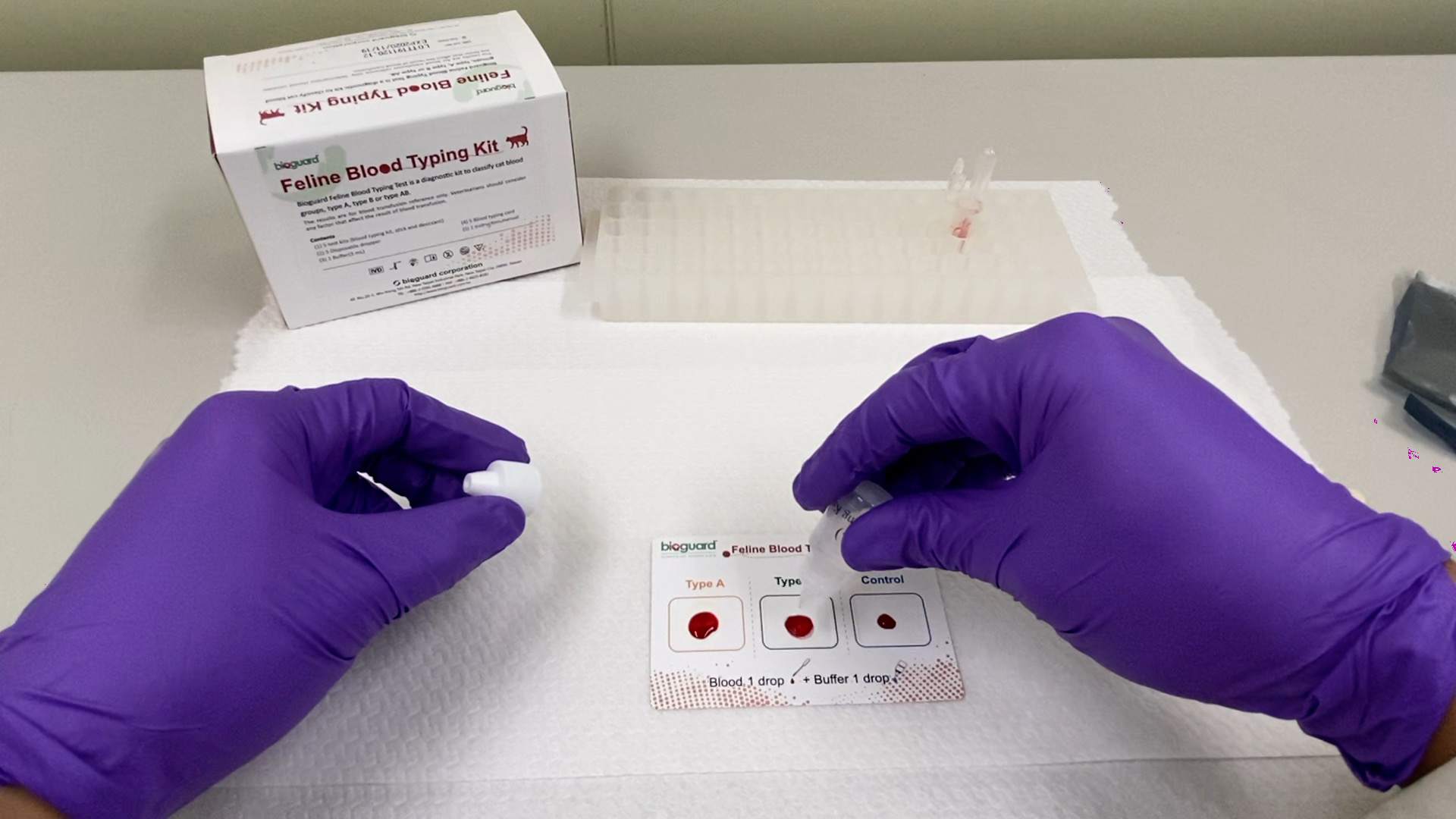
[vc_row][vc_column][vc_column_text] Feline Blood-Types Andy Pachikerl, Ph.D Introduction Like humans, cats have blood grouping. However, cats do not have the blood-type O positive. The blood type classification of cats, however, is currently based on the AB system, but like dogs, there are other antigens besides the AB system , such as the Mik blood type. The blood type of cats is composed of mainly A, B, and AB. Type A is the most common, type B is rarer, and type AB is rarest. About 95% of domestic cats are type A blood, and some varieties such as exotic short-haired cats, British short-haired cats, Persian cats, and Scottish folds have a higher percentage of type B blood. As mentioned, the blood-type of cats is mainly A, B, or AB. Peculiarly for AB type, other blood types have innate antibodies. Unlike dogs, cats have antibodies against “non-self” or foreign erythrocytes that can cause lethal immuno -reaction. Therefore, cats cannot obtain a “wrong” blood of different blood types. Before any blood transfusion clinically, cat blood typing is extremely important. Incompatibility of blood type can lead to fatal acute hemolysis reaction, particularly, the blood of a type A cat was given to a type B cat. The anti-type B antibodies found in type A cats have weaker affinity towards each other, causing a mild immune response. However, type B cats have a strong affiliated anti-type A antibody, which can cause a strong immune response. Once type B cat transfuses A-type blood, the red blood cells are rapidly destroyed,resulting in intravascular hemolysis. As little as 1 ml of type A cat blood, it is enough to cause a serious immune reaction in type B cat and then causes absolute lethality. Keep in mind that blood typing is not only extremely vital prior a blood transfusion, but also for cat breeding! Neonatal isoerythrolysis (NI) occurs when a mommy cat with type B blood gives birth to kittens with type A or AB blood and breast-feed them with a high chance of having antigens of type A blood antibodies in the milk, which can cause a severe hemolysis reaction in the kittens. There are no obvious clinical signs to severe hemolytic anemia, but only subtle symptoms such as hemoglobinuria and jaundice. Therefore, we must pay attention to the blood type of the parent before breeding. Despite the best of efforts to prevent them, transfusion reactions may still happen. Depending on the severity, therapy can include glucocorticoids, epinephrine, IV fluids, and discontinuing the transfusion. Fever is usually mild, requiring no treatment. Furosemide should be administered if volume overload occurs. The blood product can be warmed to no more than 37 ° C if hypothermia occurs. Crossmatching blood is the best means of preventing immune-mediated transfusion reactions even if the blood type is known for both cats. It is also imperative blood be collected and administered as aseptically as possible and cats receiving blood products are monitored carefully. The distribution of feline blood types varies by geographic region and breed (Table 1) 1-2. Type-A is the most common type among most cats. There is, however, geographic variation in the prevalence of type-B domestic shorthaired cats. Over 10% of the domestic shorthair cats in Australia, Italy, France and India are type- B. Breed distribution does not vary as much by location because of the international exchange of breeding cats. Over 30% of British Shorthair cats, Cornish and Devon Rex cats, and Turkish Angora or Vans have type-B blood. In contrast, Siamese and related breeds are almost exclusively type-A. Ragdoll cats appear to be unique regarding blood types. Approximately 3.2% of Ragdoll cats are discordant for blood group when genotyping is compared to serology, necessitating further investigation in this breed. Table 1: Selected Blood Type A and B Frequencies in Cats (ignoring AB blood types) The AB blood type is very rare while the frequency of the MiK blood type is unknown. The presence of red blood cell antigens in addition to the AB group may explain why transfusion compatibility is not guaranteed by blood typing; crossmatching is recommended prior to any transfusion 3. Breeding queens, along with blood donors and, if possible, blood recipients should be blood typed. Feline blood-typing methods There are various methods are that can be used to determine blood type, both in a laboratory and veterinarian clinic. Usually in a diagnostic laboratory, they would use various serological methods by adding reagents to samples of blood and observe for any agglutination reactions marking a positive result. In addition, genetic testing is now available to identify blood types A and B using buccal swabs, although it cannot distinguish between A and AB blood groups. In veterinarian clinics, testing may be performed using a card typing system (BIOGUARD® Feline blood -typing kit, New Taipei City, Taiwan and Rapid Vet-H®, Flemington, NJ). If the card-typing system is used, type-AB and type-B results should be confirmed by a referral laboratory as some cross-reactions have been known to occur. Recently,there was an introduction to an alternative novel method for blood typing ie using the gel column agglutination test (DiaMed-Vet® feline typing gel, DiaMed, Switzerland). This test is easier to interpret than the card method, although it requires a specially designed centrifuge that may be cost-prohibitive in some settings. An evaluation of various blood typing kits and methods revealed that accuracy of blood type must be high and working hand in hand with time efficiency. A complete comparison of kits and methods for blood typing is as follow.An evaluation of various blood typing kits and methods revealed that accuracy of blood type must be high and working hand in hand with time efficiency. A complete comparison of kits and methods for blood typing is as follow.An evaluation of various blood typing kits and methods revealed that accuracy of blood type must be high and working hand in hand with time efficiency. A complete comparison of kits and methods for blood typing is
Antibiotic Resistance and Horizontal Gene Transfer in Bacteria
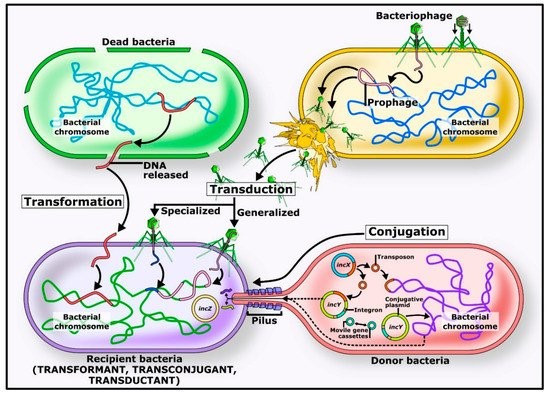
Introduction to Antibiotic Resistance Antimicrobial compounds, including natural and synthetic antibiotics, have been crucial in combating infections. Antibiotic resistance, however, has risen rapidly, threatening public health. Resistance can develop through mutations or acquisition of resistance genes via horizontal gene transfer, which has become the primary driver of the current antimicrobial resistance pandemic. Origins of Antibiotic Resistance Antibiotic resistance is ancient, arising from interactions between organisms and their environment. Many antibiotic-producing bacteria, such as Streptomyces species, carry self-resistance mechanisms. Environmental non-antibiotic-producing bacteria have also evolved resistance to survive alongside these producers. Even ancient permafrost samples reveal genes resistant to β-lactams, tetracyclines, and glycopeptides, showing the long-standing presence of resistance genes. (https://share.google/images/BHfaQxPqmbpyS3GPC) Mechanisms of Horizontal Gene Transfer Conjugation Conjugation involves direct transfer of DNA from one bacterium to another, often via plasmids. Plasmids carrying mobile genetic elements such as transposons or integrons spread resistance genes across bacterial populations, including clinically important genes like blaCTX-M and quinolone resistance genes. Transformation In transformation, bacteria uptake DNA fragments from their environment. For instance, penicillin and streptomycin resistance genes were transferred between Streptococcus pneumoniae strains in early experiments, demonstrating this mechanism’s role in spreading resistance. Transduction Transduction occurs when bacteriophages transfer DNA between bacteria “by accident.” This process contributes to resistance evolution in species like Staphylococcus aureus and other clinically relevant bacteria. Environmental Factors and Antibiotic Use Widespread antibiotic use in medicine, agriculture, and aquaculture accelerates resistance by increasing selective pressure. Most antibiotics are excreted unchanged into the environment, creating hotspots for resistance gene transfer. Increased selection pressure has also accelerated horizontal gene transfer and the abundance of resistome elements. Conclusion Horizontal gene transfer—including conjugation, transformation, and transduction—is key to spreading antibiotic resistance genes among bacteria. Understanding these mechanisms is critical to combating the rise of resistant pathogens and protecting public health. To support responsible antibiotic use, Bioguard offers the miniAST Veterinary Antibiotic Susceptibility Test Analyzer, a tool designed to help combat antimicrobial resistance with game-changing features: Feature Benefit Fast Results Get results in just 6 hours, enabling swift and confident treatment. Automated Interpretations Instantly deliver precise susceptibility profiles, supporting faster, more informed clinical decisions and optimizing patient care. Dual-Sample Testing Double the efficiency with simultaneous analysis of two samples at once. High Accuracy Achieve an impressive 92% accuracy rate compared to traditional disc diffusion tests. 📌 Note for Veterinarians: The miniAST Veterinary Antibiotic Susceptibility Test Analyzer is available exclusively to licensed veterinary clinics and hospitals. 📩 How to Order miniAST To purchase miniAST or request a quotation, please contact our sales team or email our customer service: 📧 service@bioguardlabs.com ☎️ Please include your hospital name and contact number so our sales representative can follow up with you directly. Source: Akrami F, Rajabnia M, Pournajaf A. Resistance integrons; A Mini review. Caspian J Intern Med. 2019. 10(4):370-376. Babakhani S, Oloomi M. Transposons: the agents of antibiotic resistance in bacteria. J Basic Microbiol. 2018. 58(11):905-917. doi: 10.1002/jobm.201800204. Epub 2018 Aug 16. Barka EA, Vatsa P, Sanchez L, Gaveau-Vaillant N, Jacquard C, Meier-Kolthoff JP, Klenk HP, Clément C, Ouhdouch Y, van Wezel GP. Taxonomy, Physiology, and Natural Products of Actinobacteria. Microbiol Mol Biol Rev. 2015. 80(1):1-43. Barlow M, Hall BG. Phylogenetic analysis shows that the OXA beta-lactamase genes have been on plasmids for millions of years. J Mol Evol. 2002. 55(3):314-21. Barlow M. What antimicrobial resistance has taught us about horizontal gene transfer. Methods Mol Biol. 2009. 532:397-411. Bello-López JM, Cabrero-Martínez OA, Ibáñez-Cervantes G, Hernández-Cortez C, Pelcastre-Rodríguez LI, Gonzalez-Avila LU, Castro-Escarpulli G. Horizontal Gene Transfer and Its Association with Antibiotic Resistance in the Genus Aeromonas spp. Microorganisms. 2019. 7(9). Cabello FC. Heavy use of prophylactic antibiotics in aquaculture: a growing problem for human and animal health and for the environment. Environ Microbiol. 2006. 8(7):1137-44 Clark CA, Purins L, Kaewrakon P, Focareta T, Manning PA. The Vibrio cholerae O1 chromosomal integron. Microbiology. 2000. 146 ( Pt 10):2605-2612.. Datta N, Hughes VM. Plasmids of the same Inc groups in Enterobacteria before and after the medical use of antibiotics. Nature. 198. 306(5943):616-7. D’Costa VM, McGrann KM, Hughes DW, Wright GD. Sampling the antibiotic resistome. Science. 2006. 311(5759):374-7. D’Costa VM, King CE, Kalan L, Morar M, Sung WW, Schwarz C, Froese D, Zazula G, Calmels F, Debruyne R, Golding GB, Poinar HN, Wright GD. Antibiotic resistance is ancient. Nature. 2011. 477(7365):457-61 Economou V, Gousia P. Agriculture and food animals as a source of antimicrobial-resistant bacteria. Infect Drug Resist. 2015. 8:49-61. Graham DW, Olivares-Rieumont S, Knapp CW, Lima L, Werner D, Bowen E. Antibiotic resistance gene abundances associated with waste discharges to the Almendares River near Havana, Cuba. Environ Sci Technol. 2011. 45(2):418-24. Griffith F. The Significance of Pneumococcal Types. J Hyg (Lond). 1928. 827(2):113-59. Haaber J, Penadés JR, Ingmer H. Transfer of Antibiotic Resistance in Staphylococcus aureus. Trends Microbiol. 2017. 25(11):893-905. Harford N, Mergeay M. Interspecific transformation of rifampicin resistance in the genus Bacillus. Mol Gen Genet. 1973. 120(2):151-5. Hotchkiss RD. Transfer of penicillin resistance in pneumococci by the desoxyribonucleate derived from resistant cultures. Cold Spring Harb Symp Quant Biol. 1951;16:457-61. Hyder SL, Streitfeld MM. Transfer of erythromycin resistance from clinically isolated lysogenic strains of Streptococcus pyogenes via their endogenous phage. J Infect Dis. 1978. 138(3):281-6. Knapp CW, Dolfing J, Ehlert PA, Graham DW. Evidence of increasing antibiotic resistance gene abundances in archived soils since 1940. Environ Sci Technol. 2010. 44(2):580-7. Kristensen BM, Sinha S, Boyce JD, Bojesen AM, Mell JC, Redfield RJ. Natural transformation of Gallibacterium anatis. Appl Environ Microbiol. 2012. 78(14):4914-22. Machado E, Coque TM, Cantón R, Sousa JC, Peixe L. Antibiotic resistance integrons and extended-spectrum {beta}-lactamases among Enterobacteriaceae isolates recovered from chickens and swine in Portugal. J Antimicrob Chemother. 2008. 62(2):296-302. Mazaheri Nezhad Fard R, Barton MD, Heuzenroeder MW. Bacteriophage-mediated transduction of antibiotic resistance in enterococci. Lett Appl Microbiol. 2011. 52(6):559-64. Nandi S, Maurer JJ, Hofacre C, Summers AO. Gram-positive bacteria are a major reservoir of Class 1 antibiotic resistance integrons in poultry litter. Proc Natl Acad Sci U S A. 2004. 101(18):7118-22. Partridge SR, Tsafnat G, Coiera E, Iredell JR. Gene cassettes
Breed-related disease: British Shorthair Cat
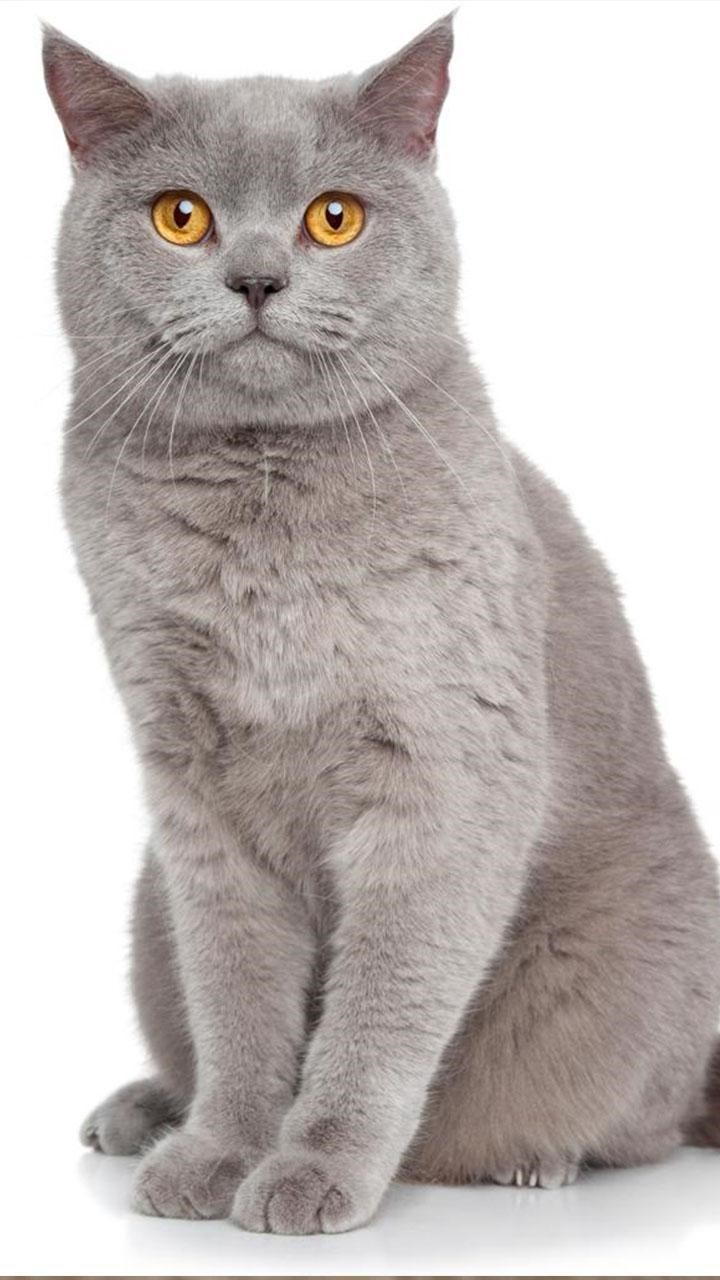
John K. Rosembert The British Shorthair is a dignified, intelligent and affectionate companion. They aren’t your general lapcat, but they tend to be always by your side on the sofa or at least nearby. Females tend to have a serious demeanor, while males are more happy -go-lucky. These laidback cats can get along well with dogs and are calm around children, but they don’t enjoy being hauled around. The British Shorthair is solid and muscular with an easygoing personality. As befits his British heritage, he is slightly reserved, but once he gets to know someone he’s quite affectionate. His short, dense coat comes in many colors and patterns and should be brushed two or three times a week to remove dead hair. British Shorthairs are generally a robust breed without too many problems. Because they have been bred with Persians in the past there is small chance of a being affected by: Polycystic kidney disease: a condition where cysts, present in the kidneys from birth, gradually increase in size until the kidney cannot function normally, resulting in kidney failure. A genetic test is available for this disease. Hypertrophic cardiomyopathy: a condition where the volume of blood that the heart pumps with each contraction is reduced. This can cause fainting, tiredness and other signs of heart disease. Sources: http://www.vetstreet.com/cats/british-shorthair#1_ugw20zmq http://aubreyamc.com/feline/british-shorthair/ Photo credit: https://www.pdsa.org.uk/taking-care-of-your-pet/looking-after-your-pet/kittens-cats/british-shorthair Photo credit: https://apkpure.com/tw/british-shorthair-cat-wallpaper-hd/com.autoinsurance.australia#com.autoinsurance.australia-1
Breed-related disease: Labrador Retriever
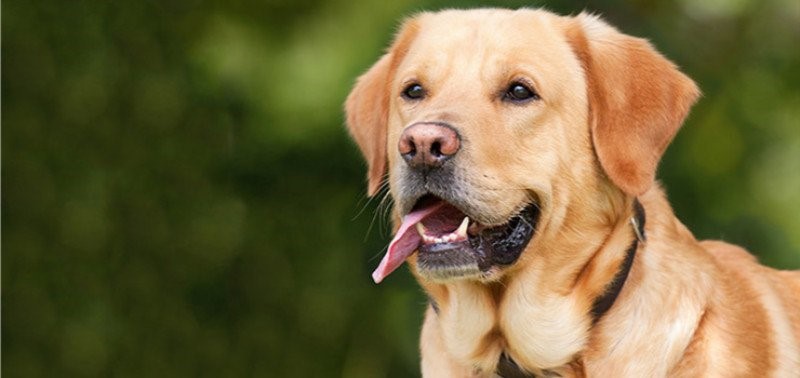
John K.Rosembert The Labrador Retriever (aka Labrador, or Lab for short) is one of several kinds of retriever, a type of gun dog. The Labrador Retriever is loyal, devoted, playful, and hardworking. He is patient with children and makes a wonderful companion and family dog. There are two types depending on which lab they were bred from: the English-bred Labs and the American-bred Labs. The English-bred Labs have a stockier, blockier, heavier and thicker build than the American-bred dogs. Both breeds have smooth double-coats without waves. The English labs also are more laid-back and they mature faster. Whatever their ancestry, Labs have a natural disposition to please and have fun, Although he barks protectively, due to his friendly nature, he is not suitable to be a guard dog, but he excels as a guide dog or assistance dog for the disabled, a search-and-rescue dog and a sniffer dog. If you are thinking of getting or got a Labrador Retriever, here are some of the most common health issues your Labrador might face: Joint Problems: Many Labs suffer from joint problems such as hip or elbow dysplasia, these conditions affect the hip or elbow joints, prohibiting normal movement and causing pain and immobility. Bloat and Obesity: Labradors are famously known for rapid eating which can also result in dangerous gastric distention. In dogs, this is also known as bloat which is a huge health problem in Labradors. Caudal myopathy: This condition, which can scare many Labradors Retriever owners, is also known as “limber tail syndrome” and is commonplace among the breed, but not exclusive to it. Myopathy in this area is characterized by a flaccid paralysis in the tail. Eye problems: Many Labradors suffer from eye problems, from minor ocular defects to cataracts or progressive retinal atrophy. These are hereditary diseases that impair the dog’s vision. Sources: Photo Credit: http://fishsubsidy.org/labrador-retriever/ https://www.dogzhealth.com/labrador-retriever-health-problems/ https://www.labradortraininghq.com/labrador-health-and-care/common-labrador-health-conditions/ https://labrador-central.com/labrador-health-issues/.
Breed-related disease: Persian Cat
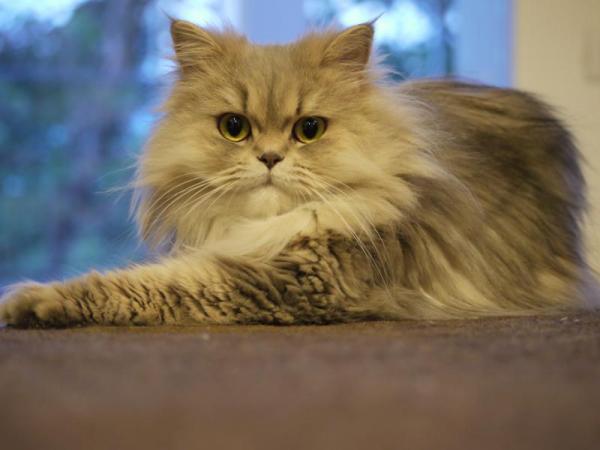
John K. Rosembert The Persian is the most popular pedigreed cat in North America, if not the world, it is also known as the “Persian Longhair” in the English-speaking countries. In the Middle East region, they are widely known as “Iranian cat” and in Iran they are known as “Shiraz cat”. The first documented ancestors of the Persian were imported into Italy from Iran around 1620. The Persian comes in two types: show and traditional. The show Persian has a round head enhanced with a thick ruff, small ears, a flat nose, big round copper eyes, a broad, short body with heavy boning atop short tree-trunk legs, and a thick, flowing plume of a tail. While the traditional Persian, also known as the Doll Face, does not have the extreme features of the show Persian, and his nose is a normal length, giving him a sweet expression. Both types have a long, glamorous coat that comes in many colors and patterns, and both share the same wonderful personality. Persian cats suffer from certain recurring problems. This does not mean that Persian cats are necessarily unhealthy, but you should be aware of their risks and needs in order to prevent diseases and notice them in time. Here are some of the most common diseases of Persian cats …. Hairballs and trichobezoars: Persian cats are known for their long and dense coat. Therefore, they are more likely to suffer from trichobezoars than other cats with shorter hair. Trichobezoars are hairballs that form in the cat’s stomach and digestive tract. Cats can usually regurgitate hairballs, but occasionally they accumulate in the stomach. When this happens, cats suffer badly and may even have serious health consequences. Polycystic kidney disease: Persian cats are very prone to polycystic kidney disease. This means that cysts develop in the kidney area, growing and multiplying if left untreated. It is estimated that 38% of Persian cats suffer from this hereditary disease. Respiratory problems: Persian cats are easily recognizable for their flat face and huge, round eyes. Sadly, having such a small nose causes the nasal passage to be very short and more sensitive to the cold, heat, moisture or dry environment. Heart problems: Fewer than 10% of older Persian cats have been found do have Hypertrophic cardiomyopathy which causes an enlargement of the left heart chamber and can result in sudden death. Eye problems: The special shape of a Persian cat’s eyes can also cause problems. The most common ocular diseases of Persian cats include: Congenital ankyloblepharon which is an inherited abnormality that usually occurs in blue-eyed Persian cats. Congenital epiphora consists of an excessive tearing of the tear duct, which results in oxidation of the hair around the eyes and infection by bacteria or fungi in the affected area Entropion is when the eyelashes rub and irritate the cat’s cornea as a result of the inversion of the eyelid edge Primary glaucoma Excessive blood pressure in the eye which results in opacity and vision loss. It should be treated by surgery. Sources: Photo credit: https://www.animalwised.com/common-diseases-of-persian-cats-738.html https://en.wikipedia.org/wiki/Persian_cat Persian https://www.animalwised.com/common-diseases-of-persian-cats-738.html
